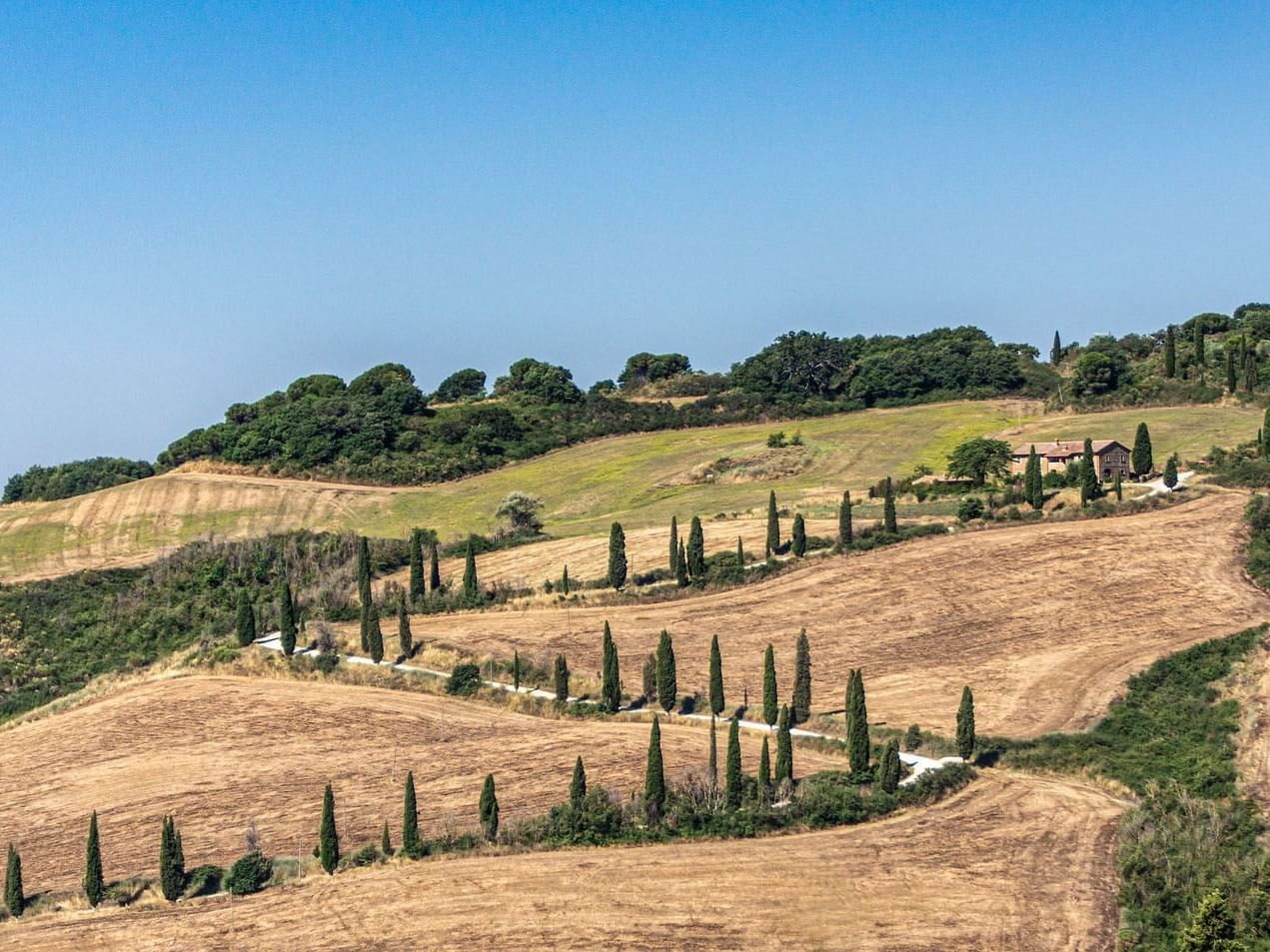Val d’orcia route
ROUTE FROM SIENA TO VAL D’ORCIA (1/2 days)
The Val d’Orcia was crossed by the Francigena, one of the two most important pilgrims’ roads in the Middle Ages. This green area is famous today for its high-quality wine production.
Turn into the freeway to Siena and continue towards Florence exiting at Siena Sud. At the exit turn to the right to Rome and follow the signs to Rome/ Monteroni. After passing Buonconvento, turn to the right to Montalcino. Montalcino is already visible at a distance. It was the last stronghold of the Republic of Siena, whose government took refuge here when the town was conquered by the Florentine in 1555. Because of the allegiance of the small town to the Republic, a group of walk-ons from Montalcino (a drummer, a standard-bearer and four archers) parade as a separate group before the Palio. The Fortress is the first monument you see, when you arrive in Montalcino. The visit of the inner yard and the garden is free of charge. To visit the glacis and the towers so that you can enjoy the view of the Val d’Orcia, you must pay an entrance ticket at the wine shop. In the portico of the nearby Palazzo dei Priori there is a statue of Cosimo I de’ Medici.
The famous Brunello DOCG is produced on the hills surrounding Montalcino. From Montalcino you can continue towards Castelnuovo dell’Abate to visit S. Antimo’s abbey. Tradition has it that it was founded by Charlemagne in 871 even though the documents mention his son, Louis the Pius. It is a superb example of Romanesque building in the austere interior of which a capital representing Daniel in the lion’s den by the master of Cebastany, the Madonna of S. Antimo of the Umbrian school and the crucifix dating from the 13th century stand out. A curiosity: after its decay, the abbey was used as a stall.
Left St Antimo towards Montalcino, you go back to the main road and continue to S. Quirico d’Orcia. In the small village, it is possible to visit, besides the Collegiata, the Horti Leonini, a notable example of Italian garden.
Continuing southwards, you reach Bagno Vignoni. The tiny village is famous because of its square, almost entirely occupied by a thermal basin where St Catherine herself used to bath. The small chapel next to the basin is dedicated to the saint. Behind the square, on the slope degrading towards the Orcia river, there is the Parco dei Mulini. In the recently open park, you can see the mills fed by thermal waters. It is the ideal place for a walk in the nature to discover ancient traditions.
